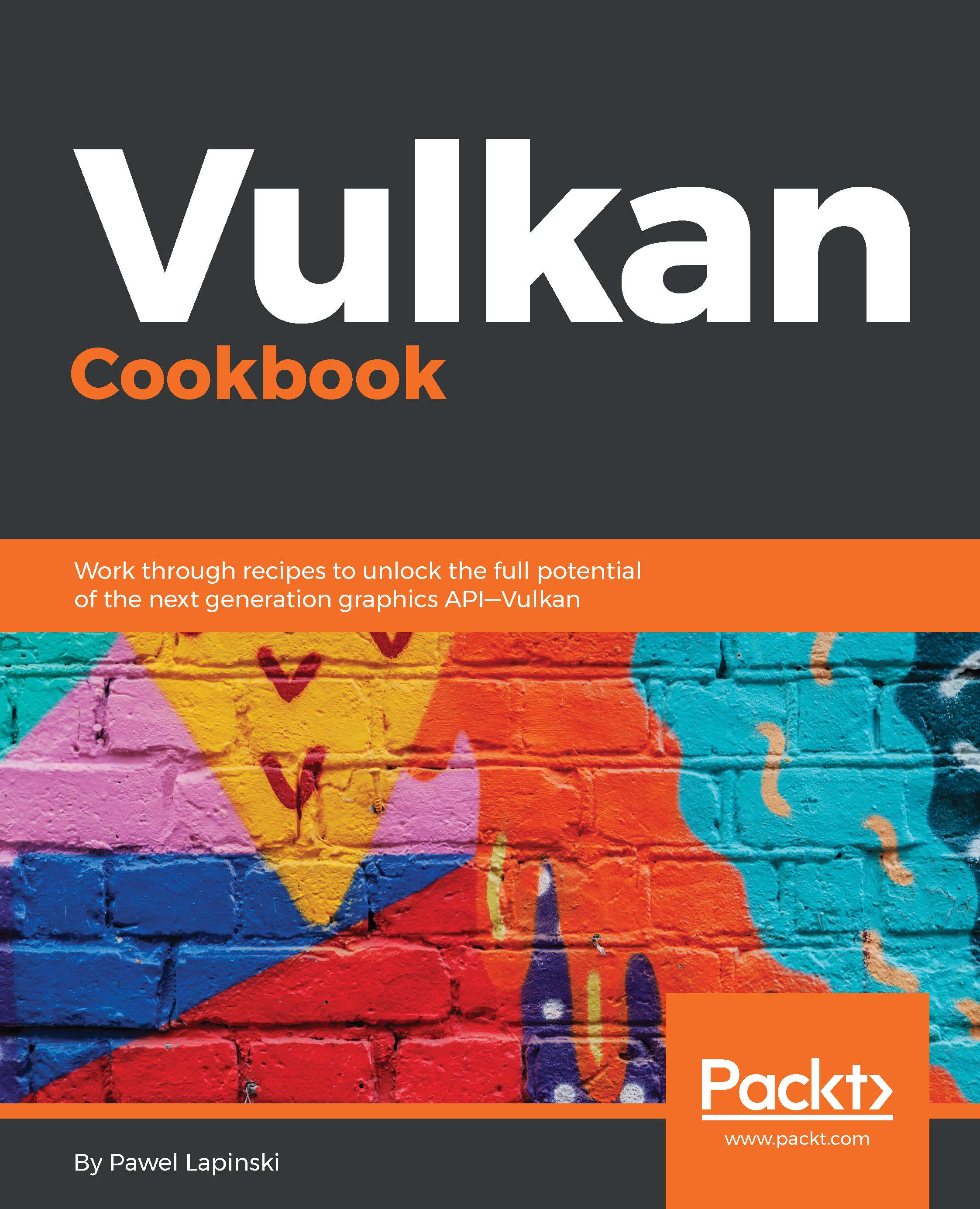In this chapter, we will cover the following recipes:
- Clearing a color image
- Clearing a depth-stencil image
- Clearing render pass attachments
- Binding vertex buffers
- Binding an index buffer
- Providing data to shaders through push constants
- Setting viewport state dynamically
- Setting scissor state dynamically
- Setting line width state dynamically
- Setting depth bias state dynamically
- Setting blend constants state dynamically
- Drawing a geometry
- Drawing an indexed geometry
- Dispatching compute work
- Executing a secondary command buffer inside a primary command buffer
- Recording a command buffer that draws a geometry with a dynamic viewport and scissor states
- Recording command buffers on multiple threads
- Preparing a single frame of animation
- Increasing performance through increasing the number of separately rendered frames


